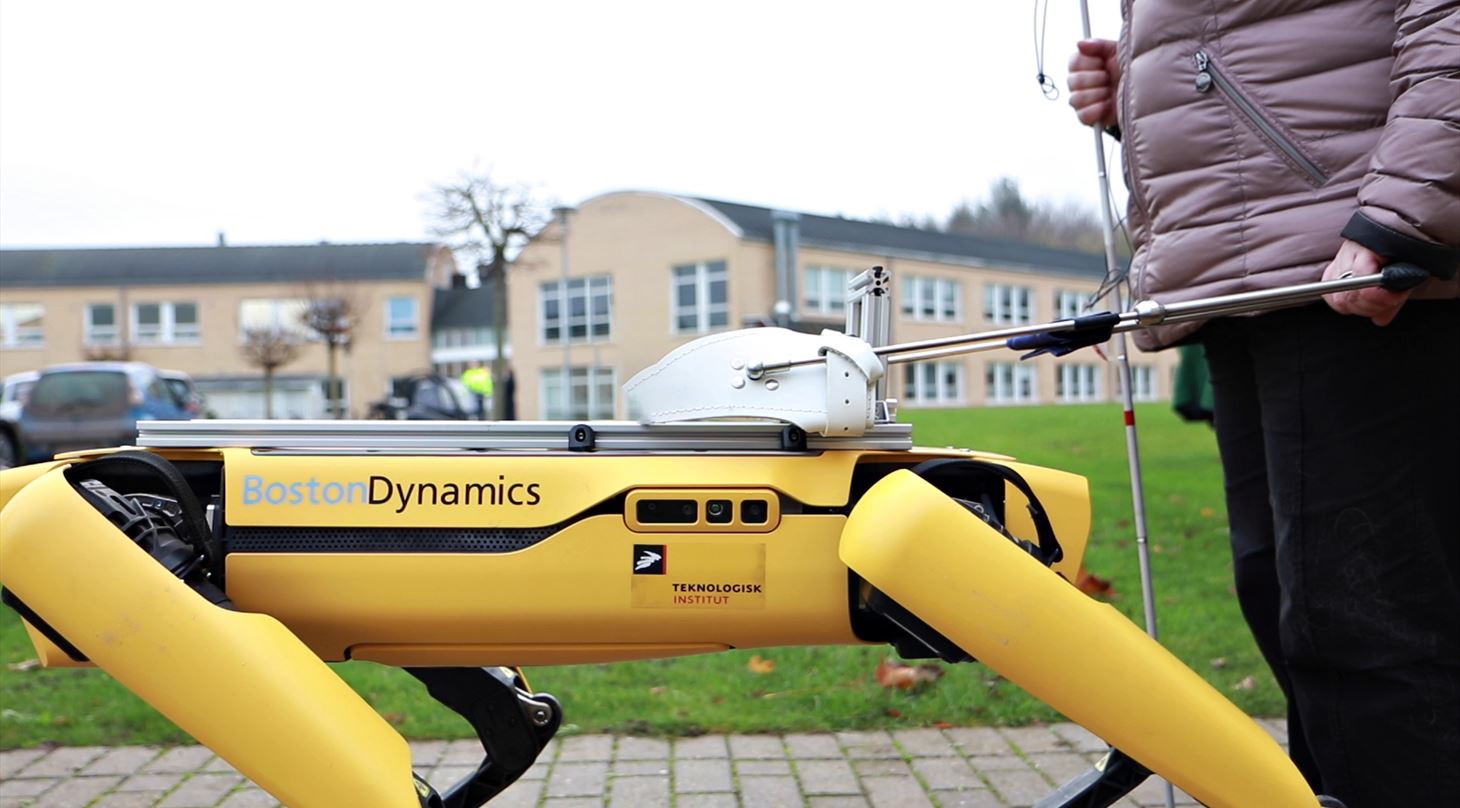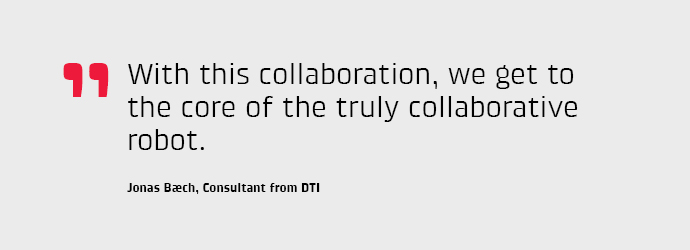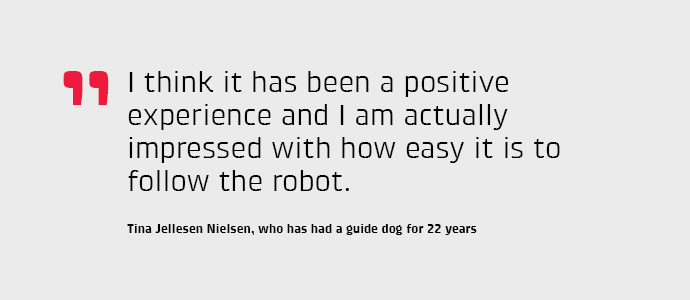
Spot the robot - a complementary guide dog for the blind
The Danish Technological Institute (DTI) and the University of Copenhagen are in the process of investigating how the robot Spot can help blind and partially-sighted people in situations where the furry guide dogs fall short.
In crucial areas, robot technology has made life easier for many people.
In factories around Denmark are robots that do all the work that we humans either cannot do, get bored of doing, or that we need help with.
More and more of the robots are collaborative robots or cobots, which have built-in safety features that enable them to work closely with humans.
But the reality is that most of these potential cobots actually work on their own without much human interaction.
However, this is far from the case in a new collaboration between DTI, the BlindTech project at the University of Copenhagen - which investigates which technologies blind people can use in their everyday lives - and IBOS, the Institute for the Blind and Visually Impaired.

In this new collaboration, robot specialists and researchers have joined forces to investigate the potential of the off-road, four-legged robot Spot as a guide dog for blind and partially-sighted people.
- With this collaboration, we get to the core of the truly collaborative robot. Spot forms a team with the blind person, a collaboration between Spot and a person on who is dependent on Spot, says Jonas Bæch, who is a Consultant at DTI.
A supplement to - and not a replacement for - a furry guide dog
With Spots' advanced sensors and software, the robot has technological possibilities that make it obvious as a kind of complementary guide dog for the blind and partially sighted.
- Spot is more flexible and off-road than has been seen in a robot before. We can walk over objects, bypass them, and walk places we have not been able to before. Spot has more flexibility in terms of turning round and navigating closely around objects. With other mobile robots, we have to turn the robot 90 degrees and then drive forward and repeat. But with Spot we can go in all directions, says Jonas Bæch from DTI.
![There are scenarios where it can be difficult to use a guide dog [...] for example, in a hospital, at the train station or in a shopping mall, says Tina Jellesen Nielsen, who has had a guide dog for 22 years.](/_/media/81154%5FSpotQuote2.jpg)
DTI and the University of Copenhagen have already tested Spot with people like Tina Jellesen Nielsen, who has been blind all her life.
- There are scenarios where it can be difficult to use a guide dog, and where I would typically resort to using a companion because I am not used to walking there - for example, in a hospital, at the train station or in a shopping mall. Using Spot instead could be very nice, says Tina Jellesen Nielsen, who has had a guide dog for 22 years.
- Of course, Spot can in no way replace my guide dog. But it could be a good supplement, she says.
And that matches exactly the assessment of Brian Lystgaard Due, associate professor of communication at the University of Copenhagen and project manager for BlindTech.
- We are not interested in investigating how or whether Spot can replace a guide dog, but more about whether it can complement and help the blind in other ways. For example, Spot will be able to provide extra information and have extra knowledge that the guide dog cannot or does not have, he says.
Confidence in a (robot) dog
For a blind or partially-sighted person to be led by a robot like Spot, there must be some form of confidence that the technology can navigate correctly and safely.
- Trust is a very central element, but not an objective quantity. People have many degrees of trust. For example, you have more confidence in a friend to guide you around than in a child, says Brian Lystgaard Due and continues:
- Most blind people already have a lot of confidence in a large number of technologies in everyday life and would also in the long run gain confidence in a robot like Spot.

And how did the test of trust between Spot and Tina go? Was it possible for her to have confidence that a robot could guide her around obstacles and to a specific place?
Initially, Spot was controlled by a human operator while Tina Jellesen Nielsen let herself be led.
- I had not thought at all that it would be like that at all. It's not nearly as scary as I had feared. It feels a little more mechanical, but I actually think that it is much softer in its movements than I had expected, says Tina Jellesen Nielsen after she has gone for a walk with Spot for the first time.
- It's not something I'm afraid of - at all. I think it has been a positive experience and I am actually impressed with how easy it is to follow the robot.